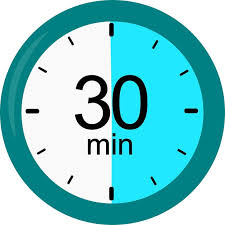Are you worried about low brake fluid?
Before you top it up, there’s an important step you might be missing.
Checking the fluid level when your car is hot can give you an inaccurate reading and even lead to burns.
In this guide, we’ll show you the proper way to check your brake fluid, ensuring safety and accurate results.
Is It Safe To Check Brake Fluid When The Car Is Hot?
No, checking your brake fluid when the car is hot is not safe.
There are two main reasons why:
Risk Of Burns:
Brake fluid is designed to fight high temperatures, but it can still get very hot after driving, especially on long trips or during heavy braking.
Opening the brake fluid reservoir while the engine is hot could cause the hot fluid to spray out and burn you.
Brake fluid can cause serious burns if it comes into contact with your skin, so it’s important to avoid any situation that could lead to this.
Inaccurate Reading:
Brake fluid absorbs heat as you drive.
This heat causes the fluid to expand in volume.
If you check the brake fluid level right after driving when the fluid is hot, it might appear low in the reservoir, even if it’s actually at the correct level.
It inaccurate reading could lead you to believe there’s a problem with your brake system and cause unnecessary worry.
In addition to the safety risks, checking the brake fluid reservoir when the car is hot can also be messy.
Hot brake fluid can splatter and stain the engine bay components if it comes out under pressure.
How Long To Wait Before Checking Brake Fluid After Driving?
It’s important to wait at least 30 minutes, ideally until your engine cools completely, before checking your car’s brake fluid level.

This may seem like a bother, but it ensures you get an accurate reading and avoids potential safety concerns.
You see, Brake fluid is a hydraulic fluid that transfers pressure from your brake pedal to the wheels when you slow down.
As you drive, especially on long trips or during heavy braking situations, the brake system heats up.
This heat transfers to the brake fluid as well.
Imagine checking the water level in a pot of boiling water.
The water level would appear much lower than it is because the bubbles from the boiling water take up space.
Hot brake fluid behaves similarly.
If you check the level right after driving when the fluid is hot, it might appear low in the reservoir, even if it’s actually at the correct level.
By waiting for the engine and brake system to cool down, the brake fluid temperature returns to normal.
This allows you to see a clear and accurate reading of the reservoir’s fill lines.
Some cars even have a “MIN” and “MAX” line printed on the reservoir itself.
If your car doesn’t have markings, consult your owner’s manual for specific instructions on how to check the fluid level.
Long trips and frequent hard braking can cause brake fluid to deteriorate faster.
If you’re unsure about the condition of your brake fluid, or if it’s been more than 2-3 years since your last brake fluid flush, it’s best to consult a qualified mechanic for a professional inspection.
What Precautions Should I Take When Checking Brake Fluid?
Here are some key precautions to follow whenever you check your car’s brake fluid:
- Let your car cool down completely. This is the golden rule to avoid burns and get an accurate reading. Ideally, wait at least 30 minutes after turning off the engine before checking the fluid.
- Park on level ground. An uneven surface can cause the brake fluid level in the reservoir to appear incorrect. Find a flat, level spot to ensure a reliable reading.
- Protect your eyes. Brake fluid can irritate your eyes if it splashes out. Wearing safety glasses or goggles is a good idea, especially if you’re topping up the reservoir and there’s a risk of overflow.
- Avoid skin contact. Brake fluid can be harmful if it gets on your skin. Wearing gloves whenever you handle brake fluid is highly recommended. If you accidentally touch the fluid, wash the area with soap and water immediately.
- Know your brake fluid type. Different car models require specific types of brake fluid. Using the wrong type can seriously damage your brake system. Consult your owner’s manual to find out the correct type of brake fluid for your car.
- Use only fresh brake fluid. Never reuse old brake fluid. It absorbs moisture over time, which can reduce its effectiveness and lead to brake problems. Always use fresh brake fluid from a sealed container when refilling the reservoir.
- Dispose of used brake fluid properly. Brake fluid is a hazardous material and shouldn’t be poured down the drain or tossed in the trash. Check with your local mechanic or recycling center for proper disposal methods. They can advise you on safe ways to get rid of used brake fluid in your area.
FAQ
Here are some answers to specific questions you might have about checking brake fluid:
What To Wear When Checking Brake Fluid?
While gloves and safety glasses are recommended, regular clothes are usually fine if you’re just checking the level and avoiding contact with the fluid.
Dangers Of Brake Fluid On The Skin?
Brake fluid can irritate and dry out your skin. In rare cases, prolonged contact can lead to more serious health problems.
Wash the area thoroughly with soap and water if you come into contact with brake fluid.
What Happens If You Use The Wrong Brake Fluid?
Using the wrong type of brake fluid can damage various components in your brake system, potentially leading to decreased braking performance or even complete brake failure.
Always refer to your owner’s manual for the correct brake fluid type.
